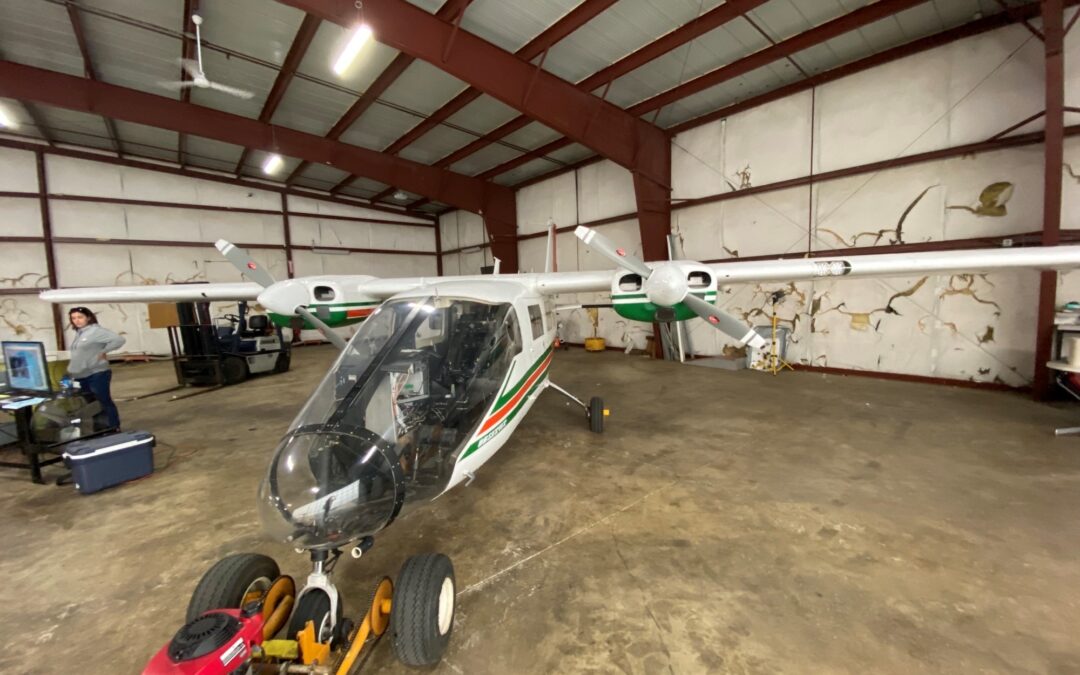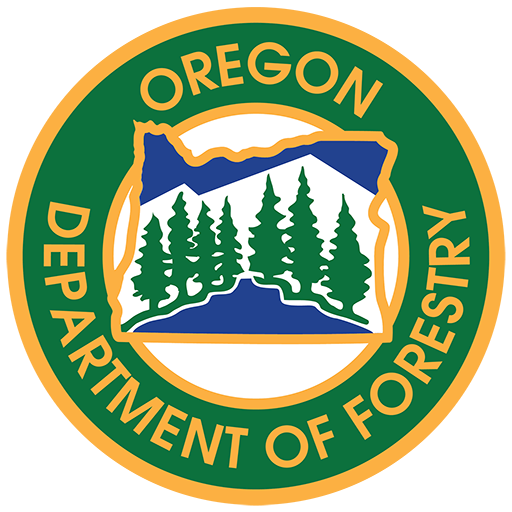May 27, 2022
This Declaration Affects 1.8 Million Acres of Oregon Department of Forestry Southwest Oregon District-Protected Lands.
JACKSON & JOSEPHINE COUNTIES, Ore. – Fire season on lands protected by the Oregon Department of Forestry’s (ODF) Southwest Oregon District begins Wednesday, June 1, 2022, at 12:01 a.m. The fire danger level will be “Low” (green) and the Industrial Fire Precaution Level (IFPL) will be I (one). Lands affected by this declaration include 1.8 million acres of state, private, county, city and Bureau of Land Management (BLM) forestlands in Jackson and Josephine counties.
Following a warm and dry start to the year, April and May brought more typical spring-like patterns and precipitation to southern Oregon and helped in decreasing the amount of fire starts. Year to date, our firefighters have responded to 25 fires for a total of 22 acres burned; these statistics tell a much different story than last year, when during the same timeframe, we had responded to 89 fire starts totaling 120 acres. While temperatures and conditions haven’t yet become consistently warm and sunny, fuels are primed to burn, and years of drought have contributed to an increased fire risk. For these reasons, fire season is being declared at this time.
Beginning Wednesday, the burning of debris piles and the use of burn barrels for burning debris will no longer be allowed in Jackson and Josephine counties. Even with recent rains, landowners are encouraged to check their previously burned piles from this spring and confirm that they have been extinguished.
In low fire danger, the following activities are prohibited:
- No debris burning, including piles and debris burned in burn barrels.
- No fireworks on or within 1/8 of a mile of forestland.
- Exploding targets and tracer ammunition, or any bullet with a pyrotechnic charge in its base, are prohibited.
- Campfires are allowed in designated campgrounds, and on private land with the landowner’s permission. Portable stoves using liquefied or bottled fuels may be used as well.
- Smoking while traveling will only be allowed in enclosed vehicles on improved roads, in boats on the water and other specifically designated locations.
- Any electric fence controllers must be approved by a nationally recognized testing laboratory, such as Underwriters Laboratories Inc., or be certified by the Department of Consumer and Business Services and be installed and used in compliance with the fence controller’s instructions for fire safe operation.
Under IFPL I (one) – fire season requirements are in effect. In addition to the following:
- A Firewatch is required at this and all higher levels unless otherwise waived.
For more information about the Oregon Department of Forestry’s Fire Season regulations, please call or visit the Southwest Oregon District unit office nearest to you:
Medford Unit, 5286 Table Rock Rd., Central Point – (541) 664-3328
Grants Pass Unit, 5375 Monument Dr., Grants Pass – (541) 474-3152
Additional information about fire season is also available online on our website, www.swofire.com, our Facebook page, @ODFSouthwest and our Twitter account, @swofire.

May 19, 2022
The Oregon Department of Forestry’s (ODF) aviation unit held their annual multi-mission aircraft training this week (May 16-20) in Salem, Oregon. This opportunity gives the department a chance to train personnel who will help with wildfire detection using the ODF-owned Partenavia P-68 Observer.
The Partenavia has had many uses in the last 40 years, but its most recent function is as the platform for ODF’s nighttime detection work. It is equipped with a FLIR infrared camera system that is paired with an augmented reality mapping system.
During fire season, the Partenavia will fly at night to easily detect wildfires started by lightning. During their time in the air, the observer, or camera operator, in the plane will look for hot spots using the infrared camera on the bottom of the plane.
“The accuracy of the Partenavia’ s FLIR infrared camera system allows for the observer to detect fires as small as a campfire from 12,000 feet in the air,” Jamie Knight, Aviation Operations Specialist, said. “Once a wildfire is detected, the observer can pin the location and alert nearby fire protection agencies so that they may quickly respond to the fire.”
Aside from detecting smaller fires, the Partenavia is also used as “eyes in the sky” for larger incidents. Once over the fire, the observer can provide a high-level view of a fire and report to the firefighters on the ground about the progress and any increases in fire behavior.
During the summer months, the aircraft is centrally based in Redmond to allow access to the entire state. Using the Partenavia as a detection tool is just one of the ways that ODF works to prevent larger wildfires.
May 9, 2022
SALEM, Ore. – The Oregon Department of Forestry and other fire prevention experts urge the public to exercise caution when disposing of yard debris this spring. The drought conditions this year put Oregon at a higher risk of wildfire.
May is Wildfire Awareness Month, which is a great time to trim trees, bushes, and tidy up plants around your home that could catch fire. This is what we call creating a “defensible space” around your home and property. As you begin spring clean-up, the Oregon Department of Forestry and Keep Oregon Green urge you to consider alternatives to burning.
Preferable options aside from burning include composting or recycling. Check with your local disposal company for recycling options. You can also cover a part of the pile with plastic to keep it dry until the fall when it’s safer to burn. Delaying your burn plans will give the debris more time to cure and avoids spring holdover fires as fire risk increases with hotter, drier weather.
“We expect this year to be another dry fire season, so the more we can reduce human-caused fires the better,” said Mike Shaw, Fire Protection Division Chief. “Fire prevention is something that all Oregonians should have at the forefront of their mind. Humans cause the majority of Oregon’s fires, but they can also prevent them.”
Seventy percent of wildfires in Oregon are human-caused fires, with debris burning being the number one cause. By waiting to burn or taking extra steps to control a fire, Oregon can significantly reduce the risk of creating a large wildfire.
If burning now is the only option to dispose of yard debris, fire prevention specialists ask people to follow safe burning practices. The following tips can help stop run-away burn piles:
- Call before you burn – Burning regulations vary by location depending on the weather and fuel conditions. If you are planning to burn, check with your local Oregon Department of Forestry district, fire protective association, fire department, or air protection authority to learn about current burning restrictions or regulations, and if you need a permit.
- Know the weather – Burn early in the day and never burn on dry or windy days, because fires can spread out of control more easily.
- Clear a 10-foot fuel-free buffer around the pile – Make sure there are no tree branches or power lines above
- Keep burn piles small – Large burn piles can cast hot embers long distances. Keep piles small, maximum of four feet by four feet. Add debris to the pile in small amounts as the pile burns.
- Always have water and fire tools nearby – When burning, have a charged water hose or a bucket of water, and shovel on hand to put out the fire. Drown the pile with water, stir the coals, and drown again, repeating until the fire is out cold.
- Stay with the fire until it is out cold – State laws requires monitoring of debris burn piles from start to finish until it is out cold. This law is intended to ensure sparks or embers that jump from the fire can be put out quickly.
- Recheck burn piles. They can retain heat for several weeks and restart when the weather warms up and winds blow.
- Never use gasoline or other flammable or combustible liquids to start or speed up your fire.
- Burn only yard debris – State laws prohibit burning materials or trash that create dense smoke or noxious odors.
- Costs of run-away debris burns– State law requires the proper clearing, building, attending and extinguishing of open fires all year. If your debris burn spreads out of control, you may have to pay for suppression costs, as well as the damage to your neighbors’ properties. This can be extremely expensive.
More tips on wildfire prevention, including campfire safety, motorized equipment use, and fire-resistant landscaping can be found on the Keep Oregon Green website. Find public use restrictions for Oregon Department of Forestry protected lands before your burn.

